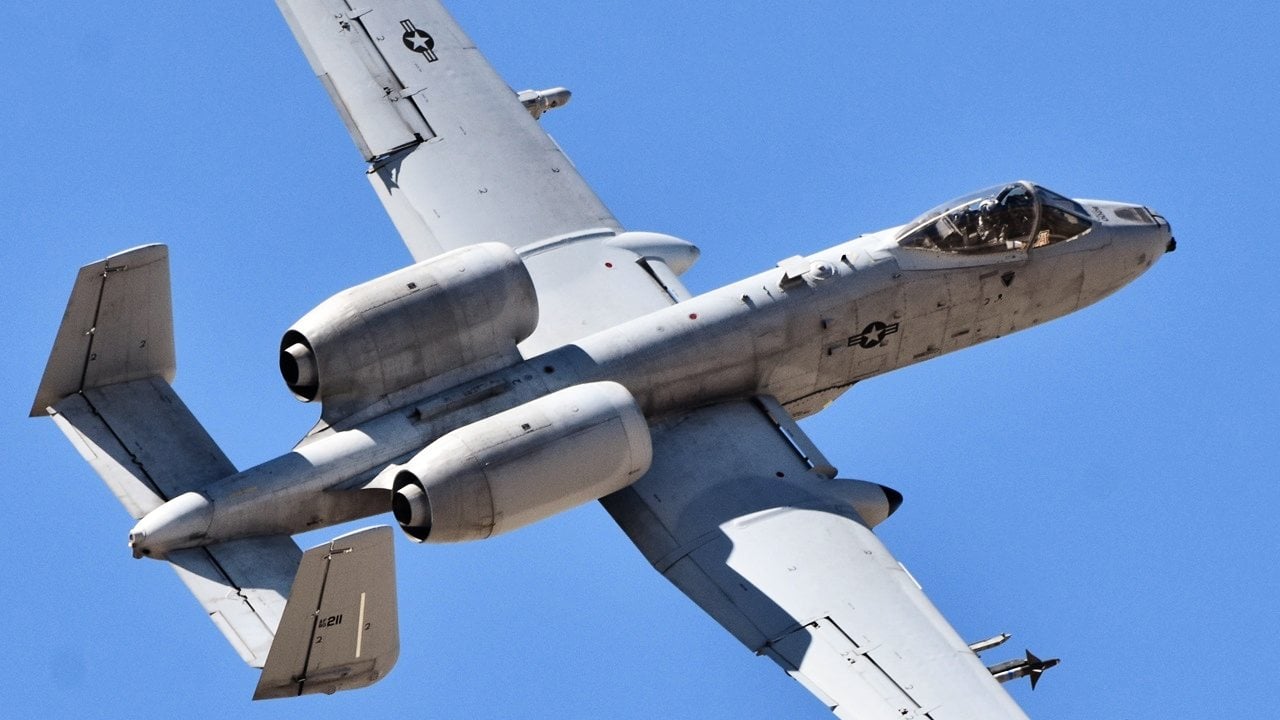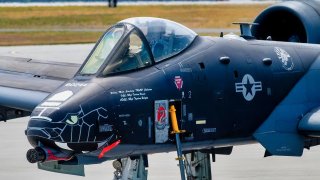The A-10 Warthog Could Fly from Aircraft Carriers
While some suggest transferring the A-10 Warthog to U.S. Army control, another bold idea proposes launching the A-10 from Navy aircraft carriers.
Summary and What You Need to Know: The A-10 Warthog, renowned for its close air support (CAS) abilities, has repeatedly proven its value in conflicts from the Cold War to the Middle East.
-While some suggest transferring the A-10 to U.S. Army control, another bold idea proposes launching the A-10 from Navy aircraft carriers.
-Despite its ruggedness, the A-10’s size, landing gear, and lack of catapult-launch capability pose significant challenges for carrier operations.
-Modifications, including airframe reinforcement and engine upgrades, would be needed. Though offering potential benefits, such as extended range and CAS support for naval operations, the concept remains impractical.
The A-10 Could Fly from U.S. Navy Carriers
The A-10 Warthog is one of the greatest warplanes the U.S. Air Force ever made. A close air support (CAS) platform initially designed to stunt a Soviet invasion of Western Europe via the Fulda Gap, the A-10 found a brand new mission set in the Middle East: loitering over mountainous battlefields in Afghanistan or desert and urban environments in Iraq, picking apart jihadists while providing critical cover for embattled U.S. ground forces.
From the Cold War to Desert Storm to the Global War on Terror, the A-10 has proven itself repeatedly. Despite this, however, the Air Force is engaged in a perennial quest to retire these flying tanks.
My readers know that I have long advocated for the Air Force to hand over control of this program to the Army, where it will likely be better appreciated. This notion has received pushback even from proponents of the A-10 because the Army is technically not allowed to operate a fixed-wing combat fleet.
Another suggestion has been to hand off the A-10 mission to U.S. Special Operations Command (SOCOM). That is even less likely due to their budgetary constraints and the fact that SOCOM is content using the cheaper, propeller-driven A-29 Tucanos for CAS mission sets.
Letting the Navy Have a Go
An even wilder concept that has been bandied about over the years has been to make this tough flying tank even more multifaceted by launching these birds from Navy aircraft carriers.
The operational feasibility is in question, sadly. While these planes were designed to take off and land on relatively short runways and can certainly operate in a variety of tough environments, their design works against carrier launches.
Some Problems
For starters, A-10s are larger than most carrier-based planes such as the F/A-18 Hornet or the F-35C Lightning II. Their size complicates storage and handling in the congested, finite space of an aircraft carrier. This would mean that the overall airwing of a carrier supporting A-10s at sea would have to be reduced in order to accommodate the larger airframes of the A-10s.
Another reason people think the A-10 is a good fit for carrier flight operations is the fact that its landing gear is exceptionally rugged. Unfortunately, it is nowhere near rugged enough to handle the sudden stop that comes with landing on a carrier flight deck – this is more like a controlled crash.
Further modifications would be required to make this bird able to handle a catapult launch. Carriers are relatively short for launching planes. So to ensure aircraft reach necessary speeds for safe take-off, a catapult shoots the screaming birds into the sky.
Therefore, the A-10’s airframe would need to be reinforced to better withstand the sudden acceleration of a launch. The wings would have to be reinforced so they don’t fall off or experience damage from the rapid launch cycle.

Similarly, arresting gear in the form of a tailhook would be required to ensure the bird, when landing, could reliably catch the arresting wire laid out to stop a speeding plane that’s landing on the flight deck.
Some Workarounds
Some proposed solutions to these serious problems include strengthening the airframe, modifying the wings for folding to ease storage concerns, and integrating a tailhook. It has been suggested that the engines could be upgraded to allow for more efficient carrier launches.
But the A-10’s engines are specifically optimized to help it loiter over contested battlefields. An engine that was more conducive to carrier flight operations might reduce the A-10’s capabilities.
The upsides, of course, are significant (if they could ever overcome the aforementioned engineering woes). Operating from carriers would give the A-10s even greater range, allowing for these birds to operate in areas without any friendly or reliable airbases on the ground.
Thus, these birds could provide CAS capabilities to regions where land-based launches are not possible. And with ongoing Navy Special Operations occurring, having the CAS option that the A-10 provides available to naval units fighting on land could serve as a vital force multiplier in a prickly tactical situation.
Alas, the A-10 will never be part of an aircraft carrier’s airwing. If these birds are to be saved from the chopping block, the best move remains sending them out of the Air Force’s purview and letting the Army take over the mission. This is a controversial move, yes. But it is a vital one to save the A-10 from unnecessary retirement.
Author Experience and Expertise: Brandon J. Weichert
Brandon J. Weichert, a National Interest national security analyst, is a former Congressional staffer and geopolitical analyst who is a contributor at The Washington Times, the Asia Times, and The-Pipeline. He is the author of Winning Space: How America Remains a Superpower, Biohacked: China’s Race to Control Life, and The Shadow War: Iran’s Quest for Supremacy. His next book, A Disaster of Our Own Making: How the West Lost Ukraine, is due October 22 from Encounter Books. Weichert can be followed via Twitter @WeTheBrandon.
All images are Creative Commons or Shutterstock.
From the Vault
Russia Freaked Out: Why the U.S. Navy 'Unretired' the Iowa-Class Battleships
Battleship vs. Battlecruiser: Iowa-Class vs. Russia's Kirov-Class (Who Wins?)


